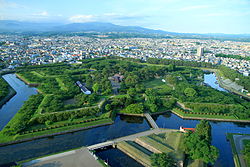

This is a list of bastion forts .


This is a list of bastion forts .




Macau






Goa














The outlines of some other star forts from the English Civil War exist. These were often built of ditches and earthen ramparts and were redoubts built to defend weak points in older fortifications such as Fort Royal Hill, Worcester, was built to defend a hill within 17th-century artillery range of the city's medieval walls.